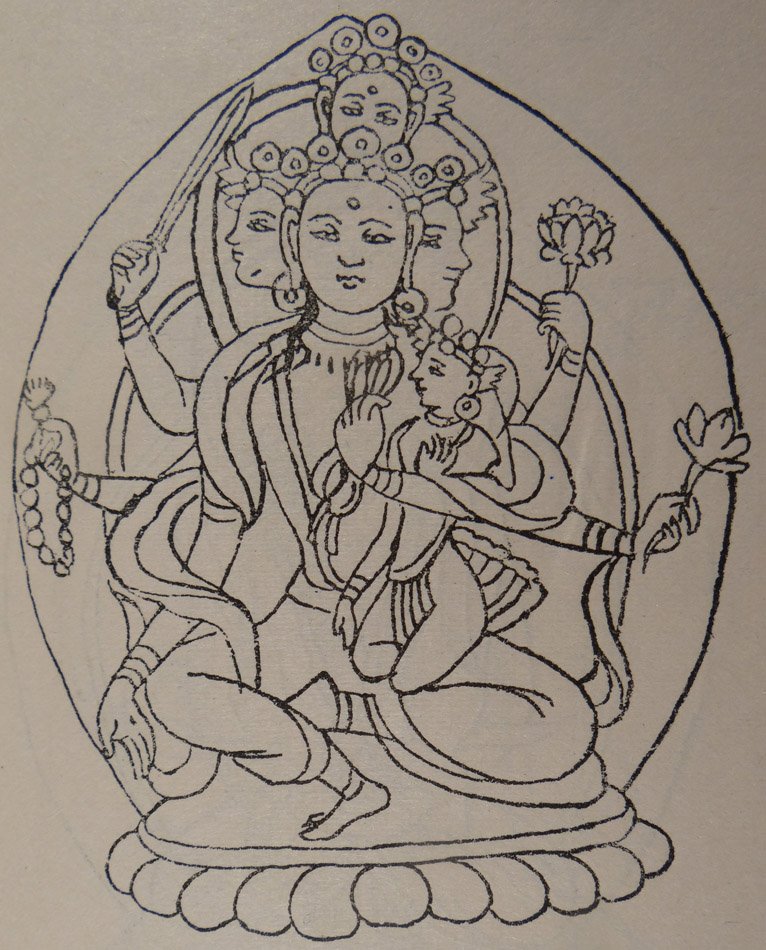The Indian Buddhist Iconography
by Benoytosh Bhattachacharyya | 1958 | 51,392 words | ISBN-10: 8173053138 | ISBN-13: 9788173053139
This page contains an iconography image of 108 forms of Avalokiteshvara (3): Halahala Lokeshvara and represents of the book Indian Buddhist Iconography, based on extracts of the Sadhanamala English translation. These plates and illustrations represent either photographs of sculptures or line-drawing reproductions of paintings or other representations of Buddhist artwork.
108 forms of Avalokiteśvara (3): Hālāhala Lokeśvara
This is figure 3 in a series of 108 forms of Avalokiteśvara from the Macchandar Vahal, Kathmandu, Nepal.
3. Hālāhala Lokeśvara. He sits in the Lalita attitude on a lotus with his Śakti on the lap. He has three faces and six arms. The face above represent probably the head of the Dhyāni Buddha, whose effigy he should bear on his crown. In his three right hands he shows the sword, the rosary and the Varada pose. In the three left hands he carries the lotus, the noose and the Utpala. The hand holding the noose passes round the Śakti in the act of embracing. The Śakti exhibits the Varada mudrā in the right hand and the Abhaya in the left.
The Bodhisattva Avalokiteśvara (The Watchful Lord) also called Padmapāṇi (Lotus bearer) is the spiritual son of the Dhyāni Buddha Amitābha. He is one of the most popular Bodhisattvas of the Buddhist Pantheon having as many as 108 different forms [viz., Hālāhala Lokeśvara].

